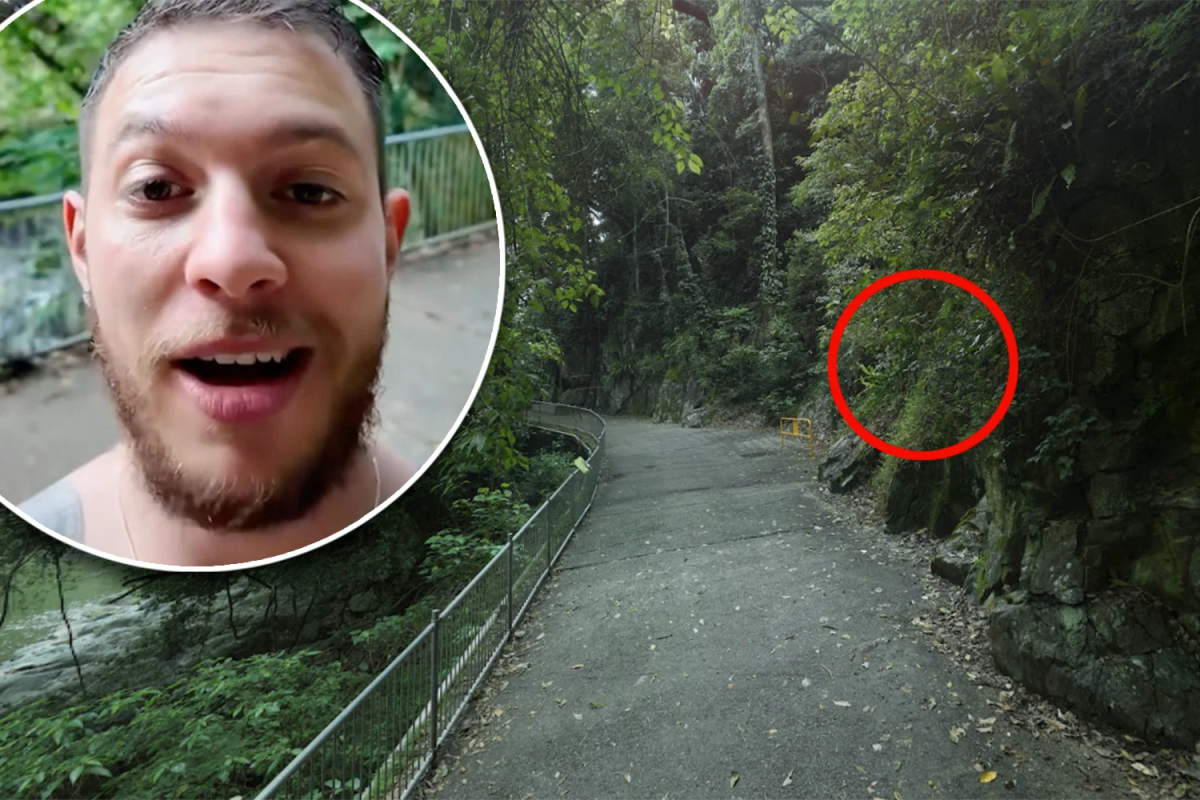
Imagine a harmless-looking shrub that could make you wish you’d never stepped outside.
The pain it delivers has been compared to being 'burnt with hot acid and electrocuted at the same time'.
Visitors in northern Australia have been caught off guard by this natural menace.
Close Encounters at Crystal Cascades
Recent footage from Crystal Cascades near Cairns revealed how close tourists often come to danger, with adventurer Rahal Soufan spotting multiple Gympie-Gympie plants growing perilously near popular walking tracks.
'Some were right beside the track and you wouldn't know,' he warned, noting that even experienced German tourists he met had never heard of the plant.
The Science Behind the Sting
Known scientifically as Dendrocnide moroides, the Gympie-Gympie is a member of the nettle family found in rainforest areas across northern Australia.
The source of its extraordinary pain remained a mystery until 2020, when researchers from the University of Queensland made a groundbreaking discovery.
They identified a new class of neurotoxins called 'gympietides', named after the indigenous name for the plant.
Although they come from a plant, these toxins are remarkably similar to spider and cone snail venoms in their 3D molecular structures and target the same pain receptors.
This explains why the pain can last so long—the gympietides permanently alter sodium channels in sensory neurons, rather than the agony being caused solely by the hairs embedded in the skin.
'Although they come from a plant, the gympietides are similar to spider and cone snail toxins.'
Identifying the Gympie-Gympie
The Gympie-Gympie is one of four Australian stinging tree species, alongside the giant stinging tree, shiny leaf stinging tree, and Atherton Tableland stinger.
It is said to deliver the worst sting of all and possibly the most painful sting of any plant in Australia.
Gympie-Gympies can grow up to two metres high, though smaller shrubs between 10 centimetres and one metre—nicknamed 'ankle biters'—are common along walking tracks.
It can be distinguished from its giant cousin by the leaf stalk, which attaches some distance from the leaf margin, whereas the giant stinging tree’s stalk attaches directly at the leaf edge.
A Plant With a Dark History
The name 'gympie gympie' originates from the Gubbi Gubbi/Kabi Kabi indigenous name 'gimpi gimpi', believed to mean 'devil'—a fitting description for a plant that has tormented humans for centuries.
European explorers first documented its intense sting in the mid-19th century, and the plant even drew the British Army’s interest in 1968 for potential weaponisation, though nothing came of the investigation.
Where You Might Encounter It
The Gympie-Gympie thrives in tropical regions, with its range extending from northern New South Wales to Cape York Peninsula, and it is particularly common in the Atherton Tablelands.
The giant stinging tree favours disturbed rainforest areas, making it more likely to grow where trees have fallen rather than in dense, undisturbed forest.
Tourists have spotted these plants in Crystal Cascades near Cairns, around the Gold Coast hinterland including Tamborine Mountain, and throughout the Daintree region.
Even fallen leaves can cause painful stings, making them a year-round hazard.
First Aid That Works
For decades, first aid options were limited, but Australian researchers developed a method using hair-removal wax strips to remove the microscopic hairs.
The Australian Tropical Research Foundation recommended this treatment, and such wax strips are now widely available from supermarkets and pharmacies.
Emergency First Aid
Use hair-removal wax strips immediately to remove microscopic hairs
Apply diluted hydrochloric acid if available (pool acid can work)
Seek medical attention for severe reactions—Call 000 if signs of allergic reaction appear
Traditional methods, such as using sticky tape or tweezers, proved largely ineffective because the trichomes act like hypodermic needles, injecting toxins upon contact.
CSIRO scientific officer Les Moore described being stung across the face while studying cassowaries near Bartle Frere, going into anaphylactic shock with vision taking days to recover.
Comments on Rahal’s social media posts echoed these experiences, with one visitor recounting a sting at Crystal Cascades that worsened when immersed in water.
Another recalled lingering 'ghosting pain' for years, while a woman stung at Tamborine Mountain said, 'My mate had to carry me from the waterfall back to the car. I just cried for four hours until it subsided, but it kind of felt like my foot was on fire.'
Staying Safe in Rainforest Areas
Young leaves carry more stinging hairs than older leaves, making spring and summer especially hazardous.
Bushwalkers and tourists are advised to stay on marked paths, wear long sleeves and pants, carry hair-removal wax strips, learn to identify the distinctive heart-shaped fuzzy leaves, be cautious around fallen trees, alert others when spotting these plants, and remember that even dead leaves can sting.
Given the Gympie-Gympie’s reputation for causing prolonged pain, prevention remains the best defence.
Future Implications
Ironically, understanding gympietides may lead to breakthroughs in pain research, potentially aiding the development of new painkillers.
What inflicts incredible suffering might one day help alleviate it for others.
What This Means For You
The Gympie-Gympie delivers one of the most excruciating plant stings in the world, with pain so intense it can last for weeks or even months.
Its toxins, called gympietides, permanently alter sensory neurons, which explains why the sting is so severe and long-lasting.
Fortunately, effective first aid exists, including the use of hair-removal wax strips and, in some cases, diluted hydrochloric acid to neutralise the microscopic hairs.
Most importantly, awareness, cautious bushwalking, and the ability to properly identify this dangerous plant are critical for staying safe in northern Australian rainforests.
For anyone exploring these regions, taking these precautions seriously can mean the difference between enjoying a peaceful hike and suffering from one of nature’s most painful surprises.
If you want to see just how devastating a brush with the Gympie-Gympie can be, there’s a detailed story that explores the full impact of its sting.
This real-life account shows how even a brief encounter with the plant can lead to weeks or months of intense pain.
It’s a useful follow-up for anyone wanting a deeper understanding of the risks and experiences others have faced.
Read more: WARNING! This common plant could leave you in pain 'worse than a snake bite’ for months
Have you ever come across a stinging tree on your travels around Australia, and how did you handle it?







